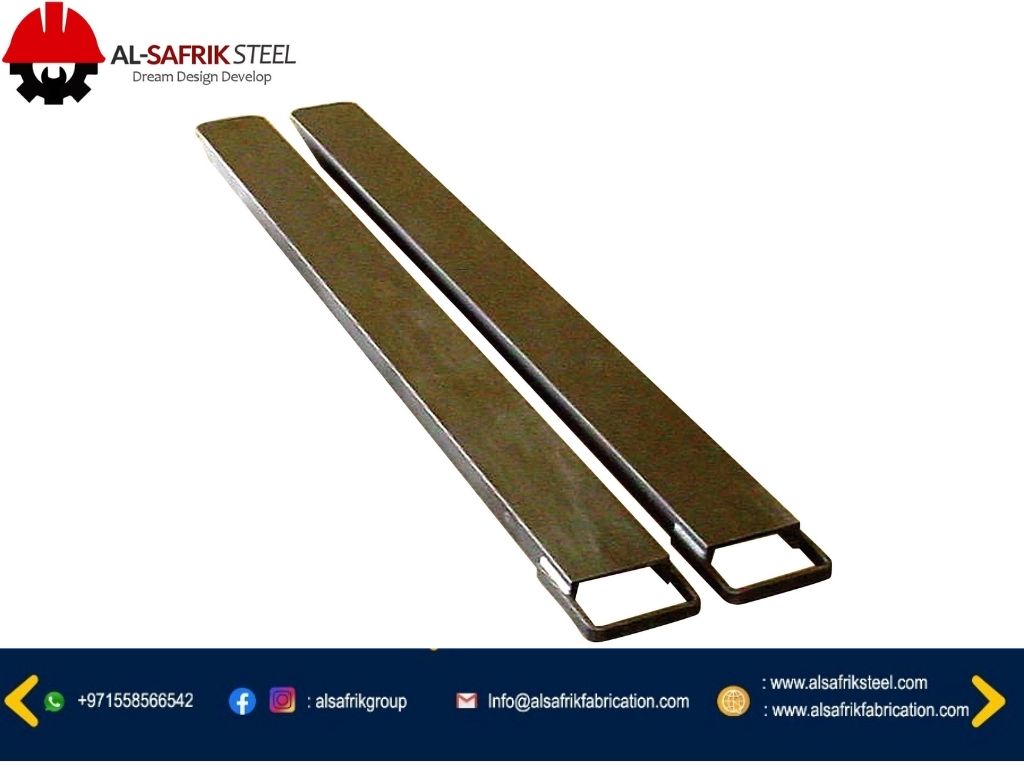Unlocking Versatility: The Power of Forklift Extensions
Unlocking Versatility: The Power of Forklift Extensions
Blog Article

In the world of materials handling, efficiency and adaptability are key factors that determine operational success. One tool that significantly enhances a forklift's capabilities is the use of forklift extensions. These attachments are designed to increase the lifting capacity and versatility of standard forklifts, allowing them to handle a wider variety of loads and navigate tighter spaces. As businesses seek to optimize their warehouse and logistics operations, understanding the benefits of forklift extensions becomes increasingly important.
Forklift extensions are particularly valuable when dealing with oversized or uniquely shaped loads that cannot be handled effectively with standard forks. By extending the reach and width of the forklift, operators can safely transport items that would otherwise be difficult to manage, improving workflow and reducing the risk of accidents. Whether it’s for moving longer pallets or stacking bulk materials, forklift extensions pave the way for enhanced productivity and agility in various commercial settings.
Benefits of Forklift Extensions
Forklift extensions significantly increase the versatility of a forklift, allowing it to handle a wider range of loads with ease. When standard forks fall short in terms of reach or support, extensions provide the extra length necessary to safely lift and transport larger items. This capability helps businesses optimize their material handling processes, reducing the need for additional equipment and enabling efficient use of existing resources.
Another key advantage of forklift extensions is the enhanced safety they offer. By extending the reach of the forklift without overloading it or compromising stability, operators can maintain better control over heavy loads. This promotes a safer workplace, minimizes the risk of accidents, and enhances overall operational efficiency. Properly used extensions ensure that loads remain secure and balanced, which is vital for safe transportation in busy environments.
Additionally, forklift extensions contribute to cost savings. By utilizing extensions, companies can tackle various handling tasks that would otherwise require different forklifts or specialized equipment. This versatility leads to fewer equipment purchases and lower maintenance costs, ultimately improving the bottom line. Investing in forklift extensions is a wise decision for businesses seeking to enhance their operational capabilities while managing costs effectively.
Types of Forklift Extensions
Forklift extensions come in various shapes and sizes, designed to accommodate specific lifting needs and improve the versatility of your forklift. One common type is the pallet fork extension, which is primarily used for loading and transporting larger and heavier loads that would otherwise be difficult to manage with standard forks. These extensions typically slide over the existing forks and can add anywhere from a few inches to several feet of length, allowing for greater reach and stability.
Another type is the carpet pole extension, which is specifically tailored for handling rolls of carpet or similar compact materials. This extension features a longer, more cylindrical shape that allows the operator to lift and maneuver bulky rolls with ease. Due to their design, carpet pole extensions help distribute the weight evenly to prevent damage to the material and ensure safe transportation.
Finally, there are fork extensions designed for handling concrete blocks or similar materials. These extensions often have a wider and flatter profile to create a stable platform for stacking and moving heavy items. This type of extension is particularly useful in construction environments where precision and strength are required to lift and transport heavy materials efficiently.
Safety Considerations
When utilizing fork lift extensions, safety should always be the top priority. These extensions can significantly increase the lifting capacity and reach of a forklift, but they also come with inherent risks. Operators must ensure that the extensions are properly fitted and rated for the weight and load conditions they are used for. Regular inspections and maintenance of both the extensions and the forklift are essential to prevent accidents.
Proper training for operators is crucial. Workers should be educated on the specific functionalities and limitations of fork lift extensions. Understanding the changes in the center of gravity when using extensions helps mitigate the risk of tipping over. Operators must also be aware of their surroundings and maintain clear visibility to avoid collisions while handling loads.
Finally, adhering to load limits is critical for safe operations. Exceeding the rated capacity can lead to catastrophic failures and accidents. Fork lift extensions can alter the stability of the forklift, and loads that are too heavy or improperly balanced increase the chances of accidents. Always follow the manufacturer's guidelines and ensure compliance with safety regulations to maintain a safe working environment.
Best Practices for Usage
Forklift Parts
To maximize the effectiveness of forklift extensions, it is crucial to ensure proper loading techniques. Operators should always distribute the load evenly across both forks and extensions to maintain balance and prevent tipping. Additionally, when handling heavy or bulky items, operators should consider the center of gravity to avoid unnecessary strain on the forklift and ensure safety during lifting.
Before utilizing forklift extensions, it is essential to check for compatibility with the forklift model. Each forklift has specific weight limits and stability requirements, and using extensions that do not match these specifications can lead to dangerous situations. Operators should also conduct thorough inspections of the extensions for any signs of damage or wear before every use, ensuring they are fit for operation.
Training is vital for all operators who will use forklift extensions. Understanding the mechanics of both the forklift and the extensions will contribute to safer and more efficient use. Ongoing education about best practices, safety protocols, and load handling will empower operators to harness the full potential of forklift extensions while minimizing risks in the workplace.
Report this page